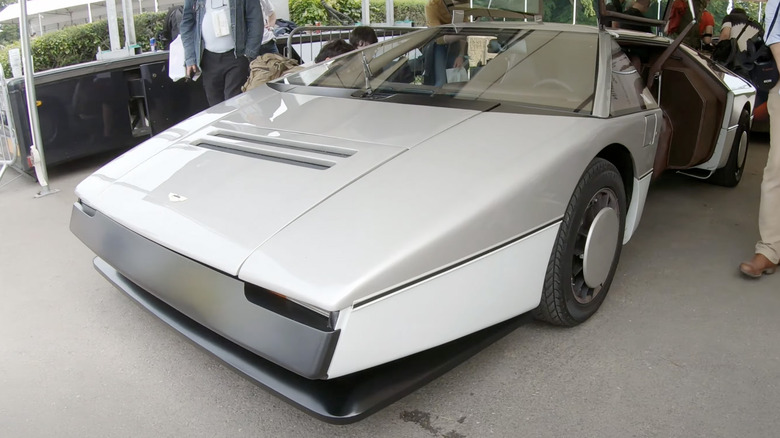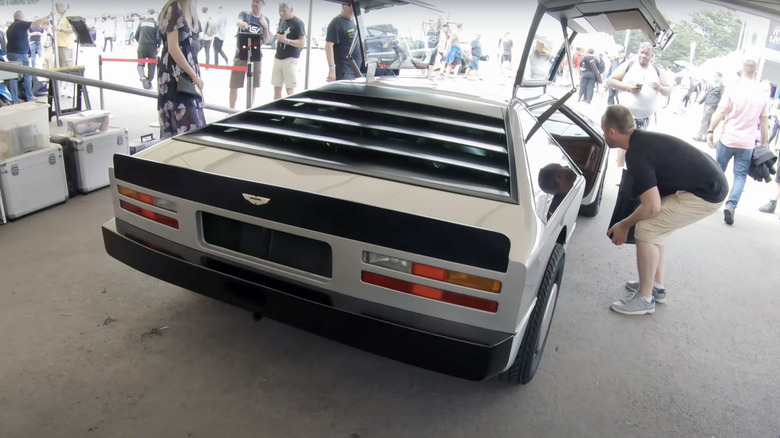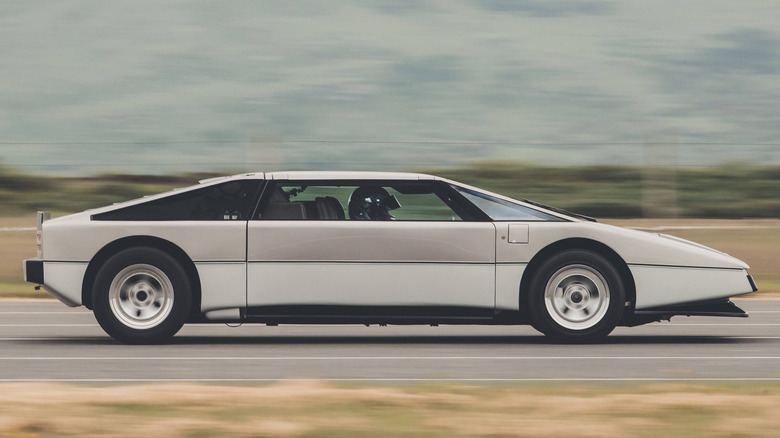What Happened To Aston Martin's Bulldog Concept Car?
In the late 1970s, Aston Martin began working on an extreme sports car project to create the fastest car in the world. The result was the 1979 Aston Martin Bulldog concept, a very low and boldly designed mid-engined supercar with huge gullwing doors and incredible performance for the period.
With an angular design that we today would say is similar to a Tesla Cybertruck, the Bulldog was designed as a statement vehicle. Aston Martin's main goal with the Bulldog was to show off its design and technical prowess, so it went to great lengths to produce a concept with a memorable appearance that looks radical today.
Aston Martin was planning to put the Bulldog into (very limited) production as a range-topping halo model, and it claimed the vehicle was designed to reach a top speed of 237 mph. However, the manufacturer could only get the one-off to 191 mph during testing, and financial troubles throughout the 1980s forced the company to cancel any production plans.
Convoluted Ownership History and Restoration
Things in the 1980s were so bad at Aston Martin that it sold the only Bulldog it ever built to a Saudi prince in 1984. He modified it, including adding mirrors and cameras to the car, before selling it to an American businessman named William Kwech in 1987, who planned to bring it to the U.S. and make it road-legal.
However, those plans never came to fruition, and we don't know exactly what happened to the Bulldog after that. It was seen at the 2009 Goodwood Festival of Speed and resurfaced again in 2013, participating in Aston Martin's centenary celebrations.
In 2020, the Bulldog was bought by a new American owner, billionaire Phillip Sarofim, who commissioned a full restoration and asked that it be returned to its original condition. The car's original dark brown and black leather upholstery was restored, for instance, after it had been changed to light tan brown.
It's interesting to note that Richard Gauntlett oversaw the restoration of the Bulldog by UK-based Classic Motor Cars. He is the son of the Aston Martin CEO, the late Victor Gauntlett, who reluctantly ended the Bulldog project in the early 1980s.
This makes the restoration more meaningful than even other similar high-level projects, adding to the Bulldog's already remarkable story. Classic Motor Cars needed 18 months to bring the car back to its former glory, and it won the Copa d'Oro at the 2022 Concorso d'Eleganza Villa d'Este.
Impressive Performance Even Today
Looking over the Aston Bulldog's spec sheet, the figures are remarkable even by 2023 sports car standards. It has a racing-derived mid-mounted 5.3-liter twin-turbocharged V8 that produces a claimed 600 horsepower and 500 lb-ft of torque.
The Bulldog had excellent aerodynamic credentials for something designed in the 1970s, with a low drag coefficient of 0.34 (better than a Ferrari Testarossa's 0.36 or the Lamborghini Countach's 0.42 figures). This was mainly achieved by making the car very low and giving it a small frontal area—it stands just 43 inches tall, making it marginally taller than a Ford GT40 racing car, and it cuts through the air with its wedge-shaped nose.
Less than two years after the restoration was completed, it finally did what Aston Martin had planned for it all those decades ago: to exceed 200 mph. During a top speed run held in June 2023 on an airfield in Kintyre, Scotland, it reached a speed of 205.4 mph.


